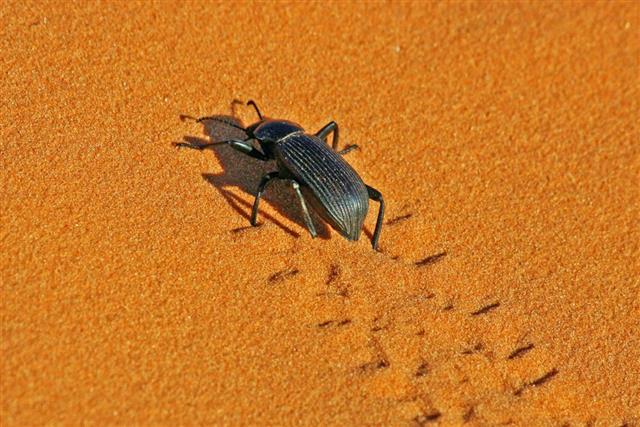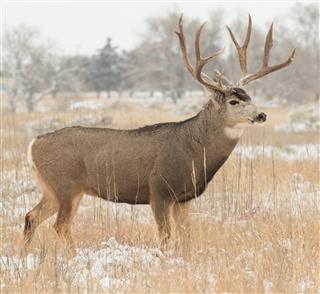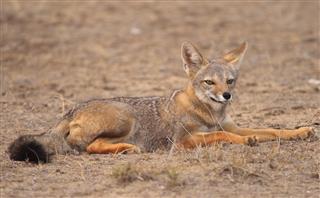
The Sonoran desert animals list consists mainly of bees, wasps, birds, reptiles, and mammals. This article discusses briefly about these animals and provides a list of the same.
The Sonoran desert is recorded as the hottest desert in North America, covering areas of Arizona, California, and parts of Mexico. It measures approximately 311,000 square kilometers and houses some of the most unique flora and fauna of the world. For example, the saguaro cactus is native to this desert, while the jaguar is one of the desert cats which is exclusively found in this region. Likewise, many other peculiar plants and animals thrive here irrespective of the extreme temperature conditions and presence of limited water.
As compared to other desert biome, the Sonoran desert is more lush, which is mainly because of the bi-seasonal rainfall pattern. Consequently, the animal species inhabiting it are adapted to this yearly rainfall pattern. During seasonal rains, this area remains hot, which is a characteristic of all desert areas. Other factors that support the abundance of plant life in this desert is its location and soil fertility. At present, advancement in the field of irrigation and water supply have also made it possible to yield vast agricultural lands in this desert.
More than 2000 plants have identified from here. The cactus plants along with those belonging to the legume and agave families are used as food by the desert inhabitants. While speaking about the fauna of this desert, there are approximately 350 birds, more than 100 reptiles, and 60 species of mammals. It is also found that 1000 bee species inhabit this desert and play a major role in pollinating flowers.
Sonoran Desert Animals List
The animals and plants that reside here are evolved with special adaptive features which enable them to live and thrive in the harsh climatic conditions. The pronghorns and roadrunners can serve as an example to understand these adaptations. The former represents the fastest running mammals living in North America, whereas the latter are birds that run at a higher speed rather than flying as a means to conserve energy. Another adaptation worth mentioning is that of the kangaroo rat, a small mammal that can live its entire life without drinking water.
The following is a list of the native animals.
- Cactus wren
- Great horned owls
- Barn owls
- Cactus pygmy owls
- Desert bighorn
- Golden eagles
- Anna’s hummingbird
- Elf owl
- Gila woodpecker
- Gambel’s quail
- White-winged dove
- Big free-tailed bat
- Red-tailed hawk
- Roadrunner
- Turkey vulture
- Dragon fly
- Black widow spider
- Pepsis wasp
- Tarantula
- Palo verde root borer beetle
- Bark scorpion
- Desert centipede
- Sonoran toads
- Kangaroo rat
- Harris antelope ground squirrel
- Antelope jackrabbit
- Ringtail
- White-throated woodrat
- Packrat
- Rio Sonoyta mud turtle
- Sonoran mud turtle
- Desert tortoise
- Arizona pocket mouse
- Badger
- Big brown bat
- Black-tailed jackrabbit
- Red-spotted toad
- Glossy snake
- Great Plains toad
- Sonoran green toad
- Blackneck garter snake
- Sonoran whipsnake
- Zebratail lizard
- Banded sand snake
- Rosy boa
- Sonoran shovelnose snake
- Longnose snake
- Spotted leafnose snake
- Desert horned lizard
- Flat-tail horned lizard
- Desert spiny lizard
- Coral snake
- Long-tailed Brush Lizard
- Tree lizard
- Clark’s spiny lizard
- Common kingsnake
- Chuckwallas
- Diamondback rattlesnake
- Banded gila monster
- Western banded gecko
- Blacktail rattlesnake
- Longnose leopard lizard
- Collared lizard
- Bobcats
- Sonoran pronghorn antelopes
- Coyotes
- Gray fox
- Javelina
- Mule deer
- Coati
- Desert iguana
- Sidewinder
- Botta’s pocket gopher
- Cactus mouse
- California myotis
- Canyon mouse
- Desert cottontail
- Hoary bat
- Kit fox
- Mountain lion
- Pallid bat
- Pinacate cactus mouse
- Silver-haired bat
- Southern grasshopper mouse
- Townsend’s big-eared bat
- Western spotted skunk
- Ground snake
- Cave Myotis
- California leaf-nosed bat
- Lesser long-nosed bat
- Mexican long-tongued bat
The Sonoran desert is a tourist place that attracts thousands of people every year, especially those who have a passion for wildlife conservation. Its diversity in animals makes it an interesting place to visit. Various resorts have been maintained for tourist who are interested in staying within the desert and exploring the varied plants and animals. With human intervention for developmental projects, habitat destruction is on the rise, which in turn is responsible for a decrease in the population of certain plant and animal species that reside here.













































































